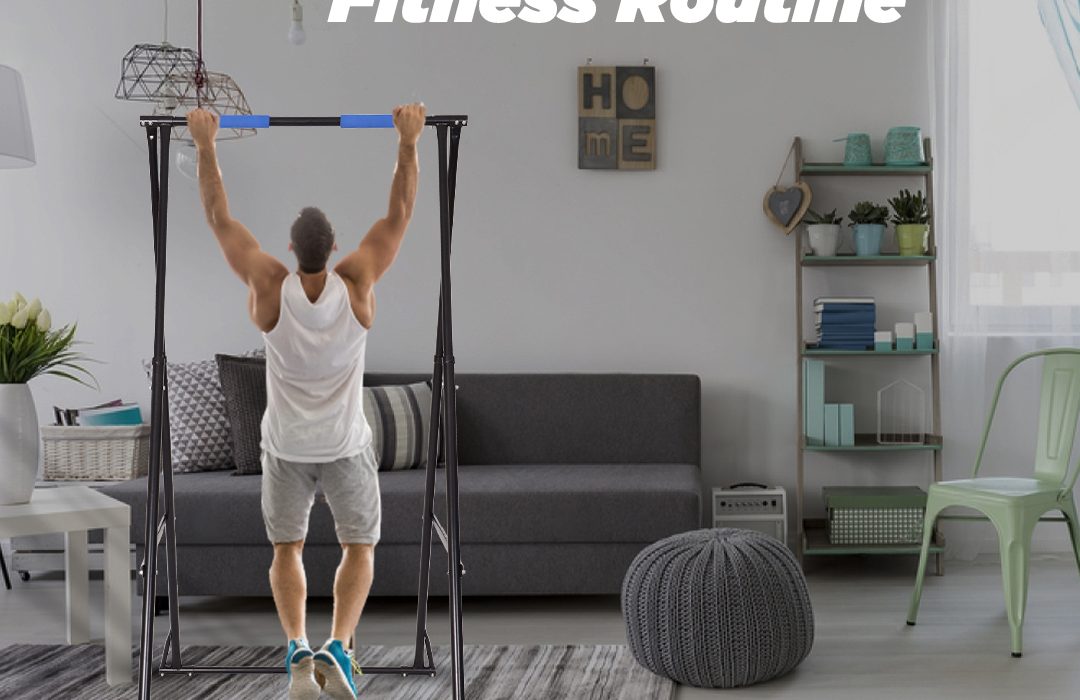Hey, fitness enthusiasts! So you can’t go to the gym? No big deal. You can still achieve a great workout right in your living room. The hero of today’s story is the indoor pull up bar. We’ll walk you through a complete workout that targets your whole body.
Why Choose an Indoor Pull Up Bar?
You might think pull-up bars are just for, well, pull-ups. But you’d be wrong. An indoor pull up bar is a versatile tool that works out your arms, back, and core. They’re also easy on the wallet and simple to set up.
So you can turn any room into your gym.
What You’ll Need
Before we start, make sure you have the following:
- An indoor pull-up bar, of course!
- Comfy workout clothes that let you move freely
- A timer to keep track of your sets
- A water bottle to stay hydrated
Warm-Up
Before diving into any strenuous activity, warming up is crucial. A good warm-up prepares your body for the workout ahead, reducing the risk of injury. Start by jumping jacks or jogging in place for about 3-5 minutes. This will get your heart rate up, and your muscles warm up, setting the stage for an effective workout.
Pull-Ups
Stand under the portable pull up bars. Reach up and grab the bar with your palms facing away from you. Your hands should be slightly wider than shoulder-width apart. Take a deep breath and pull yourself up to get your chin above the bar. Slowly lower yourself back down to the starting position.
- Sets: 3
- Reps: 8-12
Why It’s Good
Pull-ups are a compound exercise, meaning they work multiple muscle groups simultaneously. In this case, you’re targeting your latissimus dorsi (the large muscles in your back) and your biceps and forearms. This makes pull-ups an incredibly efficient exercise for building upper body strength.
Chin-Ups
For chin-ups, you’ll change your grip. Stand under the bar and grab it with your palms facing towards you. Your hands should be about shoulder-width apart. As with pull-ups, pull yourself up until your chin is above the bar. Lower yourself back down in a controlled manner.
- Sets: 3
- Reps: 8-12
Why It’s Good
While similar to pull-ups, chin-ups put more emphasis on your biceps. They also engage your back muscles but allow your biceps to do more work. This makes them a great complement to Indoor Pull up bar, ensuring a well-rounded upper-body workout.
Hanging Leg Raises
How to Do It: Hang from the bar. Keep your legs straight and lift them to hip level.
- Sets: 3
- Reps: 10-15
Australian Style with Indoor Pull up bar
How to Do It: Lower the bar or find a lower grip. Stand under the bar and pull your chest up to it.
- Sets: 3
- Reps: 8-12
- Why It’s Good: This variation works your back from a different angle with an Indoor Pull up bar.
Cool Down
Finish your workout with some light stretching. Focus on the muscles you’ve worked: arms, back, and shoulders.
Tips for Success
Follow these tips to get success in less time.
Be Regular: Consistency is Key
One of the most important factors in any fitness journey is consistency. Doing this workout once won’t make a big difference; making it a regular part of your routine will. Aim to perform this workout 2-3 times a week. Consistency over time will help you build strength, improve your form, and see noticeable changes in your physique.
Drink Water: Hydration is Important
You might not realize it, but you can lose a lot of water during a workout, even as short as this. Dehydration can lead to decreased performance, fatigue, and even muscle cramps. So, it’s crucial to keep a water bottle nearby and take sips before, during, and after your workout. Proper hydration can make a significant difference in how you feel and perform.
Rest Well: Your Muscles Need Time to Recover
Exercise, especially strength training, creates tiny tears in your muscle fibres. These tears are good; as they repair, your muscles strengthen. But for that repair to happen, you must give your body time to heal. Make sure to take at least one rest day between workouts.
On your off days, consider doing light cardio or stretching to aid in recovery without putting additional strain on your muscles. That’s how pull bars for home can be your best companion.
Conclusion
And there you have it—a full-body workout with just one piece of equipment: the indoor pull up bar. With portable pull up bars, you can even take your workout on the go. So what are you waiting for? Your home gym is calling! Happy exercising!


